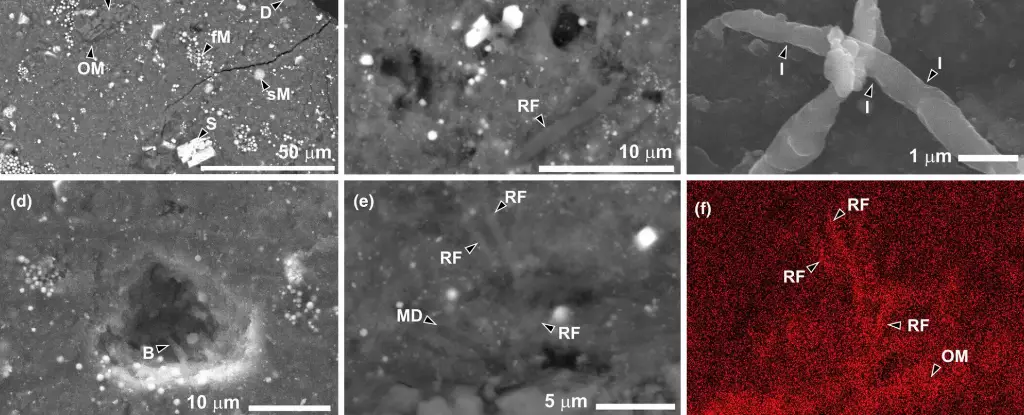The quest to understand the origins of life on Earth has long captivated scientists and laypeople alike. Central to this discourse is the captivating theory of panspermia, which posits that life, or at least the building blocks of life, may have traveled through space to find a home on our planet. This concept, while not new, has recently been reignited by new findings from the Hayabusa2 mission, which returned samples from the asteroid Ryugu. However, the implications of these findings warrant a deeper examination, revealing complexities that either support or challenge the panspermia hypothesis.
The notion of organic molecules existing in the cosmos is well-established. Cold molecular clouds and celestial bodies like asteroids and comets have yielded a surprising abundance of organic compounds, including sugars and amino acids—the essential building blocks of life. This circumstantial evidence suggests that such ingredients are ubiquitous in the universe. The idea that life on Earth could have been seeded by organic compounds delivered via meteorites or comets is intriguing and not widely contested in the scientific community.
Yet, the more radical theory of panspermia raises more profound questions: Could Earth have been not only visited by life’s building blocks but also by life itself? This idea first gained traction during the 19th and early 20th centuries, coinciding with the discovery that cellular life appeared on Earth disturbingly early in its geological history. This controversial exploration into our cosmic ancestry invites skepticism and critical evaluation of its foundational assumptions.
The Panspermia Hypothesis: The Pros and Cons
At its core, the panspermia hypothesis suggests that life might have originated elsewhere in the universe and traveled to Earth via space-faring objects. The rapid emergence of cellular life on Earth raises a bewildering question: How could such complex biochemistry have evolved so swiftly without extraterrestrial help? While it is conceivable that life on Earth stemmed from space or another celestial body, several aspects of this hypothesis require careful scrutiny.
One argues the hurdles faced during the long journey through space. While certain extremophiles have demonstrated an ability to endure extreme environments—including the vacuum of space—there remains uncertainty regarding their ability to survive interplanetary travel lasting millions or billions of years. The process of transition from organic compounds to biological life is intricate and may not be as flexible as we might envision.
Furthermore, the recent findings from the Hayabusa2 mission necessitate an even more rigorous analysis of the panspermia hypothesis. The mission successfully collected samples from the asteroid Ryugu, generating excitement within the scientific community. However, while researchers discovered organic rods and filaments resembling microbial life, the implications of this finding may not align with the daring claims that life exists beyond Earth.
Contamination remains a significant concern for any scientific investigation into life beyond Earth. In the case of the Ryugu samples, researchers took extensive measures to keep the samples sterile during their journey back to Earth. However, the formidable resilience of microbial life always looms large. Rather than confirming the existence of extraterrestrial life, the presence of these organic materials may rather indicate contamination from terrestrial sources.
The characteristics of the discovered organic matter—specifically their size distribution, growth patterns, and decline phases—all point toward a likely Earth-origin conclusion. Given that any alien microbial life would likely have had vastly different evolutionary trajectories, the similarities prompt a reconsideration of our sterilization protocols and best practices for avoiding contamination in future missions.
While the recent findings from the Hayabusa2 mission may not overtly support the panspermia theory, they underline two crucial insights. First, our current sterilization methods could be inadequate, potentially leading us to inadvertently spread Earth life to other celestial bodies, such as Mars or the Moon. Such possibilities introduce ethical questions about contaminating other worlds and misinterpreting their ecosystems.
Second, the organic materials found on asteroids signify that the raw ingredients for life may reside across our Solar System. Although Earth life may not have originated in space, these explorative findings suggest a more interconnected cosmic web where the elements for life abound. The pursuit of life beyond our planet becomes even more critical as we prepare to explore and potentially colonize other celestial bodies.
While the theory of panspermia may tempt us with the allure of extraterrestrial origins, the latest investigations remind us of the complex realities that shape our understanding of life’s beginnings—both on Earth and beyond. The journey may be long and riddled with uncertainties, but the cosmic mystery continues to inspire wonder and scientific curiosity.


Leave a Reply